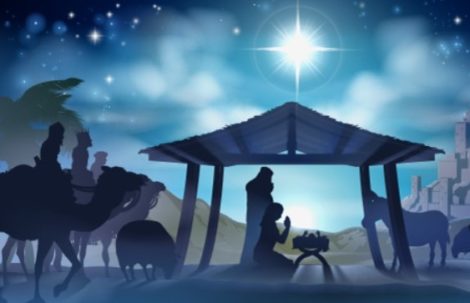 Currently, I’m in Delhi, India teaching at our North India Regional Evangelism Seminar. While here, Director of Development Bonnie Hollabaugh and I had the opportunity to visit the Taj Mahal in Agra. What an experience! This beautiful and extraordinary monument to love is well worth its distinction as one of the world’s wonders.
Currently, I’m in Delhi, India teaching at our North India Regional Evangelism Seminar. While here, Director of Development Bonnie Hollabaugh and I had the opportunity to visit the Taj Mahal in Agra. What an experience! This beautiful and extraordinary monument to love is well worth its distinction as one of the world’s wonders.
The Taj Mahal is awe-inspiring. And of course, as is so often the case when I visit a new place, I learned something unexpected and meaningful in my experience there.
The story of the Taj Mahal is fascinating: this amazing structure has been described as one of the most magnificent tributes to love in the world. The story begins in the 1600’s when Mughal emperor Shah Jahan determined to honor the memory of his wife with a tremendous mahal, or castle. She was his third wife and the only one to bear children. His first two wives both died in childbirth. When he built this magnificent castle, he honored the memories of both of these women by building gates to the grounds at the east and the west.
 The Taj Mahal is stunning for a variety of reasons. Its symmetry is stunning. Everything about it is perfectly balanced. It is inlaid with precious and semi-precious stones, all hand-carved and embedded in marble in intricate floral patterns. The craftsmanship is so astonishingly smooth that from a distance it appears that the flowers have been painted rather than inlaid. And it is a brilliant white. That’s because it is constructed out of a uniquely translucent, nonporous marble found only in India. Because it is translucent, it almost glows as the light moves through it. Because it is nonporous, nothing can penetrate it or stain it or discolor it, so even after many centuries, it is as white as it was when it was first constructed. All that has been required is for it to be washed with soap and water.
The Taj Mahal is stunning for a variety of reasons. Its symmetry is stunning. Everything about it is perfectly balanced. It is inlaid with precious and semi-precious stones, all hand-carved and embedded in marble in intricate floral patterns. The craftsmanship is so astonishingly smooth that from a distance it appears that the flowers have been painted rather than inlaid. And it is a brilliant white. That’s because it is constructed out of a uniquely translucent, nonporous marble found only in India. Because it is translucent, it almost glows as the light moves through it. Because it is nonporous, nothing can penetrate it or stain it or discolor it, so even after many centuries, it is as white as it was when it was first constructed. All that has been required is for it to be washed with soap and water.
The Princess is buried at the center of the Taj Mahal in a lower area that isn’t accessible to the public. Directly above her grave, in the exact center of the castle, is a gorgeous tomb made of translucent marble with ornate inlaid gemstones and remarkable carvings. Everything revolves around this center point. All the detailed symmetry that marks the castle – from the way it can be seen perfectly centered through the majestic entry arch at one end of the gardens to the shrines on each side and all the carving and inlays – it all revolves around this central, ornate tomb.
As I listened to our guide describe this perfection of detail and symmetry, and remind us that it was all created as a tribute to love, I found myself reflecting on the way we think about love and create images and expectations of how it should look and feel. So often those images are idealized and seemingly perfect – like the Taj Mahal: beautiful to look at, romantic and exciting to think about.
That idealized image of perfection and beauty can color not only our understanding of love, but also our expectations of God, ourselves, and others. Rather than expecting God’s love to be perfect, we imagine that we must be perfect. We imagine that the only way God will love us is if our lives are in complete balance, with no hint of damage or stain. And when we are faced with the possibility of sharing God’s love with others, we often lay that same expectation of perfection on them. It is as though we believe others must have their lives in perfect balance before we are willing to share the good news of God’s great love.
 And here is the point at which the Taj Mahal made its impact on me. In the midst of all this beauty, perfection and symmetry, there is one thing that is not in balance – the tomb of the very man who determined to build this flawless shrine. He is buried to the left of his beloved wife, the one thing out of kilter in the midst of seeming perfection, symmetry, and balance.
And here is the point at which the Taj Mahal made its impact on me. In the midst of all this beauty, perfection and symmetry, there is one thing that is not in balance – the tomb of the very man who determined to build this flawless shrine. He is buried to the left of his beloved wife, the one thing out of kilter in the midst of seeming perfection, symmetry, and balance.
When it comes to love, there is no such thing as perfection. Even the greatest love will have things that are out of kilter, things that cause hardship, challenge, and pain. It is not perfection that makes a love great, it is its willingness to persevere through the hardship, challenge, and pain.
When it comes to God’s love for us, God’s love may be perfect, but we do not have to be. God loves us in the midst of our brokenness and became human in Jesus Christ in order to share that burden with us.
When it comes to sharing God’s love with others, we do not wait for others to have it all together. In the same way that God loves us in our brokenness, we extend that same love to others, meeting them exactly where they are, not where we think they need to be.
The Taj Mahal is truly a magnificent wonder. Its beauty radiates through its intricacy and detail. But an outer image is never the best judge of an inner love. For though our lives may not be in complete balance and we may feel damaged or stained, it is through God’s great love that wounds are healed and true beauty shines. And it is only when we release our expectations of perfection that God can begin his good work of restoring all of us to our original, intended beauty and wholeness.
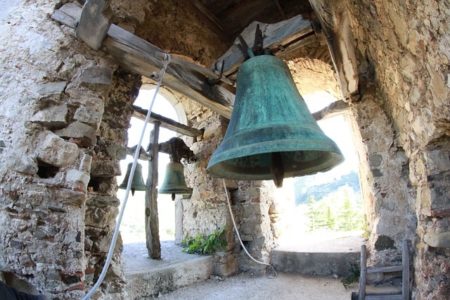

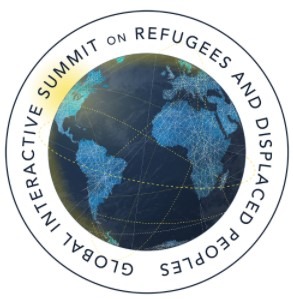 view the summit on Facebook on The Salvation Army International Social Justice Commission page, where sessions are live-streamed.
view the summit on Facebook on The Salvation Army International Social Justice Commission page, where sessions are live-streamed.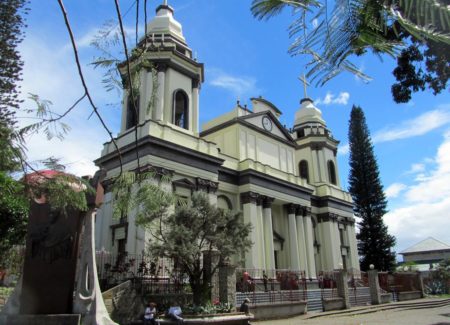
 Our annual invitational faith sharing conference for North American clergy and clergy spouses of multiple denominations is gathering at St. Simon’s Island, Georgia, a historic Wesley location tucked on the Atlantic under towering oaks and rustling Spanish moss. The
Our annual invitational faith sharing conference for North American clergy and clergy spouses of multiple denominations is gathering at St. Simon’s Island, Georgia, a historic Wesley location tucked on the Atlantic under towering oaks and rustling Spanish moss. The 
 The complex dynamics of living missionally in a postmodern, post-Christendom context will be probed and dissected in the beautiful, historic setting of the University of Durham this August in a brand-new gathering called Convergence. Leading thinkers and practitioners will discuss compelling issues like the relationship between science and faith, the monastic and the missional, globalization and migration, and more. This is an open event for clergy and church leaders. Following a time of equipping in Durham, participants are also welcome to engage in a Wesley heritage tour including stops in Epworth, Bristol, and London.
The complex dynamics of living missionally in a postmodern, post-Christendom context will be probed and dissected in the beautiful, historic setting of the University of Durham this August in a brand-new gathering called Convergence. Leading thinkers and practitioners will discuss compelling issues like the relationship between science and faith, the monastic and the missional, globalization and migration, and more. This is an open event for clergy and church leaders. Following a time of equipping in Durham, participants are also welcome to engage in a Wesley heritage tour including stops in Epworth, Bristol, and London.
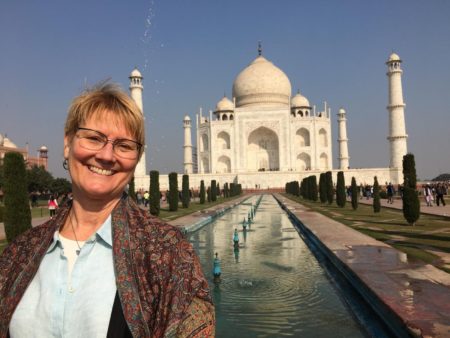
 Currently, I’m in Delhi, India teaching at our North India Regional Evangelism Seminar. While here, Director of Development Bonnie Hollabaugh and I had the opportunity to visit the Taj Mahal in Agra. What an experience! This beautiful and extraordinary monument to love is well worth its distinction as one of the world’s wonders.
Currently, I’m in Delhi, India teaching at our North India Regional Evangelism Seminar. While here, Director of Development Bonnie Hollabaugh and I had the opportunity to visit the Taj Mahal in Agra. What an experience! This beautiful and extraordinary monument to love is well worth its distinction as one of the world’s wonders. The Taj Mahal is stunning for a variety of reasons. Its symmetry is stunning. Everything about it is perfectly balanced. It is inlaid with precious and semi-precious stones, all hand-carved and embedded in marble in intricate floral patterns. The craftsmanship is so astonishingly smooth that from a distance it appears that the flowers have been painted rather than inlaid. And it is a brilliant white. That’s because it is constructed out of a uniquely translucent, nonporous marble found only in India. Because it is translucent, it almost glows as the light moves through it. Because it is nonporous, nothing can penetrate it or stain it or discolor it, so even after many centuries, it is as white as it was when it was first constructed. All that has been required is for it to be washed with soap and water.
The Taj Mahal is stunning for a variety of reasons. Its symmetry is stunning. Everything about it is perfectly balanced. It is inlaid with precious and semi-precious stones, all hand-carved and embedded in marble in intricate floral patterns. The craftsmanship is so astonishingly smooth that from a distance it appears that the flowers have been painted rather than inlaid. And it is a brilliant white. That’s because it is constructed out of a uniquely translucent, nonporous marble found only in India. Because it is translucent, it almost glows as the light moves through it. Because it is nonporous, nothing can penetrate it or stain it or discolor it, so even after many centuries, it is as white as it was when it was first constructed. All that has been required is for it to be washed with soap and water. And here is the point at which the Taj Mahal made its impact on me. In the midst of all this beauty, perfection and symmetry, there is one thing that is not in balance – the tomb of the very man who determined to build this flawless shrine. He is buried to the left of his beloved wife, the one thing out of kilter in the midst of seeming perfection, symmetry, and balance.
And here is the point at which the Taj Mahal made its impact on me. In the midst of all this beauty, perfection and symmetry, there is one thing that is not in balance – the tomb of the very man who determined to build this flawless shrine. He is buried to the left of his beloved wife, the one thing out of kilter in the midst of seeming perfection, symmetry, and balance.
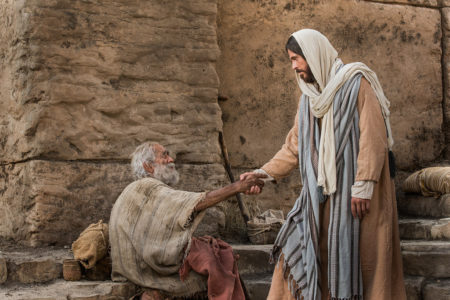

 The joy of Christian faith is that the God who entered human history in Jesus of Nazareth, the God who is present in the here and now through the power of the Holy Spirit, that God will one day come in glory. In Jesus, God is telling us that everything will be okay in the end. No hurt is permanent, no sorrow is absolute, no loss lasts forever, no defeat is insurmountable. This joy is not a denial of the reality of suffering. If the life of Jesus tells us anything, it is that suffering, discouragement, disappointment, frustration, and even death, are very, very real. And yet, amidst that reality, Jesus shows us that the Kingdom of God will overcome it all. God’s love is so great, it will conquer all the world’s horrors. God’s love is so prodigious, no evil can possibly prevail against it. Everything will be okay in the end. If it’s not okay, it’s not the end.
The joy of Christian faith is that the God who entered human history in Jesus of Nazareth, the God who is present in the here and now through the power of the Holy Spirit, that God will one day come in glory. In Jesus, God is telling us that everything will be okay in the end. No hurt is permanent, no sorrow is absolute, no loss lasts forever, no defeat is insurmountable. This joy is not a denial of the reality of suffering. If the life of Jesus tells us anything, it is that suffering, discouragement, disappointment, frustration, and even death, are very, very real. And yet, amidst that reality, Jesus shows us that the Kingdom of God will overcome it all. God’s love is so great, it will conquer all the world’s horrors. God’s love is so prodigious, no evil can possibly prevail against it. Everything will be okay in the end. If it’s not okay, it’s not the end.